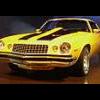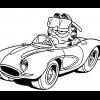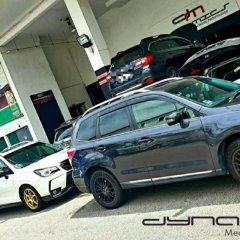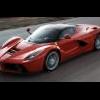Search the Community
Showing results for tags 'engines'.
-
Just curious, if there are some engine oil left-over from a car's servicing, can it be used to top-up a diesel engine ? (e.g. Shell Helix Ultra 5w-40)
-
Nowadays, many automakers are introducing numerous features on their new models which were not available previously. These features are included to enhance or improve the driving experience on the road. Newer features (or technology, as some would say) usually come with a downside and most of the time it is either complexity or added costs. As a result, automakers face a tough time balancing these new features and the added concerns. Let's take a look at some of the automotive technologies or features that are slowly getting phased out. Compact Disc player Compact discs? Who buys them nowadays? These are the most common questions you will hear when we talk about music CDs. CD players are going through the same phase cassette decks went through when music CDs were hugely popular. Today, one can easily download songs from the cyber space. You could also easily get a portable MP3 player for a low price. The same goes for automotive stereo systems and today's auto stereo systems come with a variety of features. Many of these systems come with a connection that could plug in portable devices such as the iPhone or a USB thumb drive and the higher end ones come with an integrated Bluetooth technology. Conventional buttons and knobs Automakers are aware that consumers today love touch screen systems. There are many reasons why such systems are getting more popular. First of all, it is the level of personal customisation that a user can apply and some automakers have introduced systems that can be operated by voice. Although touch screen systems may look cool but it can be rather distracting to use when you are driving and there were also reports of such systems having problems such as lag or even a total system crash. Such systems are still at the infant stage and as time goes by, they will only get better. Manual transmissions If you were to go to a public car park and pick out ten cars, I can bet you that more than half of them do not have a traditional manual gearbox. Whatever the reasons are, drivers today just prefer automatic transmissions over a manual one. Automatic transmissions today are much more efficient than the ones used years ago. Some automakers even stress that their automated gearboxes shift faster than a human being's hand. It is common to see cars today with auto gearboxes that have six or more gears and this trend will not stop anytime soon. Large sized engines This may not really apply locally as car buyers here are more cautious of engine capacity due to the government's road tax system. But if you were to take a closer look at newer models today, you will realise that automakers are more inclined towards releasing cars with smaller sized engines and this is a good thing for local buyers. Just take a look at cars from the Volkswagen Group. Small turbocharged engines that are able to produce power and efficiency of larger ones. Another example is Ford's EcoBoost range of engines. As prices of fuel are not getting any lower, this strategy of using small capacity engines with direct injection coupled with forced-induced devices, will be the new direction for most automakers in the future. Car keys More cars today comes with keyless entry and drivers need to only carry a key fob. Some of these key fobs are rather high-tech. You could start your car remotely, open or close your rear boot etc. But it seems that the key fob is going to be extinct soon. Late last year, Hyundai introduced a concept technology that enables the owner of the car to lock and unlock his/her car and to also start it with just tapping a smart phone on the car. A Near Field Communication (NFC) tag is located at the door and all the driver has to do is to put his/her smart phone close to the tag. The system also pulls up the driver's profile and sets the audio, climate control and even phone book entries before the engine starts. It even comes with a charging pad so that your phone's battery will not dry up. The above points are just some of the features which I feel that are getting phased out by newer technologies. If you feel that there are other features which are getting phased out, please comment below.
- 4 comments
-
- discussions
- local
- (and 15 more)
-
As more and more people keep old cars and with the era of games such as need for speed. Do people upgrade car engines and transmission? E.g. A 2002 Toyota Altis engine vs 2016 Toyota Altis engine The latter will be more efficient
- 32 replies
-
- toyota
- need for speed
-
(and 4 more)
Tagged with:
-
http://www.autoexpress.co.uk/car-news/90369/turbo-takeover-is-this-the-end-for-naturally-aspirated-engines The demise of the NA engines
- 15 replies
-
- turbo na engines
- future
-
(and 1 more)
Tagged with:
-
http://www.roadandtrack.com/car-reviews/car-comparison-tests/v-8-supercars-the-comparison-65-7-roa0314 http://www.roadandtrack.com/cm/roadandtrack/data/ROA040114FEA_ComparoMarkup-1.pdf http://www.roadandtrack.com/cm/roadandtrack/data/ROA040114FEA_Comparo-2.pdf V8 Supercars Sedan Showdown - Comparison Tests - Road & Trac.pdf
- 9 replies
-
- bmw m series
- supercar
-
(and 5 more)
Tagged with:
-
Introduction Almost all car motors work on the principle of a four-stroke combustion sequence. The sequence is intake, compression, ignition and release. All these strokes happen one after another to create power that moves the car. The parts needed to make this work are a piston, intake and outtake valves, a spark plug and a rod that connects to the crankshaft so the energy created can move the car. Most car motors need at least four cylinders to generate enough power to move the car at an acceptable rate of speed, and some cars have six, eight, 10 or even 12 cylinders. Intake At the beginning of the engine's process of generating power, the piston lowers to the bottom of the cylinder in the motor where it is housed, and a mixture of fuel and air is injected into the cylinder. This mixture is mostly air, since only a small amount of fuel is needed to generate the power needed to move the car. Almost all cars manufactured today use a fuel injector that controls the mixture of fuel and air using sensors and a computer. Compression Next, the piston moves up and there is a compression phase where the space for the fuel and the air mixture is decreased by the movement of the piston head toward the top of the cylinder. The intensity of the explosion depends on the amount of pressure in this space, so the air flow out of the cylinder is prevented by a seal placed on the top of the cylinder. Ignition The object that ignites the mixture of fuel and air is the spark plug. The spark plug is placed at the top of the piston's cycle in the cylinder, and it generates a spark to ignite the mixture. The spark must be timed correctly with the apex of the piston's motion, or the engine will not function at its optimum level, since the explosion sends the piston down toward the bottom of the cylinder and moves the crankshaft, which propels the car forward. Release At the finish of the downward stroke of the piston, there is an opening provided by an exhaust valve that exudes the waste gas created by the ignition of the fuel and air. After the gas leaves the piston cylinder, it is sent to the catalytic converter, which reduces the amount of pollutants before it makes the final exit from the tailpipe.
-
- car engines
- motor
-
(and 1 more)
Tagged with:
-

Honda reveals 1.0-, 1.5- and 2.0-liter VTEC TURBO engines
SeriousGuy posted a topic in Japanese Talk
Turbo Honda ? To me , Honda B Series engine is still the best. Honda has announced a trio of VTEC TURBO engines which will be offered in a wide variety of models in the near future. The newly developed lineup of direct-injection gasoline turbocharged engines will work on small- to medium-sized vehicles and will utilize Honda's Earth Dreams Technology. The smallest unit will be a three-cylinder, 1.0-liter power unit followed by a 4-cylinder, 1.5-liter engine. Both of them promise to have reduced friction and a turbocharger featuring a low moment of inertia. The direct injection technology will provide a suitable balance between high output and torque, while at the same time remaining fuel efficient. The 4-cylinder, 2.0-liter Euro 6-compliant engine is the crown jewel with its maximum output of more than 280 HP (206 kW) in the highly anticipated Civic Type R confirmed for a 2015 launch. Source: Honda -
Hi bros, I would need to change car in 1 years time. Given the prices of new cars, i will have to settle for a 2nd hand car. But i am not ruling out brand new cars yet. Lets say a 7 year old car with 30,000 km per year...assuming standard servicing was done. How many percent of horsepower the engine would lose in the 7 years? For 2nd hand cars, i am not so worried about suspension, air con, upholstery etc....i am more worried about engine and gear box and chassis....
-
This Friday-Sunday, Vpower pump at 98 price. Shell jus sent me the SMS
-
Hi guys, my colleague has got an EK 1.5 ESI(?), which has got overheating issues. Does anyone know any workshop very familiar with this model of the civic? He has tried radiator flush, top overhaul etc, but does not solve the issue permanantly. Do hope to get some good workshop contacts. Thanks!
-
I think I can safely say that we have come to the end of high power and high revving NA engines. They are being replaced by FI........... The days of K20A, 3SGE, 4G92, 4AGE etc........ are all but gone liao..... Even the days of high power small CC Turbo engines is coming to an end. Mit says no more Evo and no idea if Subaru will continue to come out with their WRX STI as well. Now, they are all replaced by highly efficient small CC turbo engines. NA still around of course but the focus is no longer on power and RPM but efficiency. How times have changed.....
-
[extract] Porsche is working on a new four-cylinder petrol engine that would power its new baby roadster, the Boxster, the Cayman and potentially even the 911. Outgoing head of R&D Wolfgang Durheimer said at the Detroit show:
- 3 comments
-
- porsche
- four cylinder
-
(and 2 more)
Tagged with:
-
I have done some research on my own and I think the main difference between the engines may be due to the bore linder/sleeving. AFAIK, many European companies like BMW, Audi etc are no longer using sleeves. Intead they are using mainly Alusil etching on their cylinders. Hence this created a layer of very hard alusil coating on the block. No sleeving of the block is required. Min wear during run-in period. On the other hand, many of the Jap/Korean cars are still using cast iron sleeves with aluminium blocks. If cast iron sleeving is used, there will always be significant wear during run-in period. I can't be 100% sure of course. There other numerous other factors that contribute to engine construction.
-
http://en.wikipedia.org/wiki/BMW_N57 Take a look at the latest BMW diesel engine esp. the twin turbo engine. Its HP is 302HP with a whopping 600Nm of torque!! By contrast, BMW's N54B30 (a 3L turbo engine) produces ~330HP and 450Nm torque. Can fight even evos and WRX easily (stock for stock of course). But the 600Nm toruqe allows the diesel car to pull ahead long before the WRX or Evo's turbo kicks in....
-
http://paultan.org/2006/07/25/twin-engine-...-hyundai-coupe/ Chck this out. A Hyundai coupe with 2 engines... Wow!! Thats interesting.
-
http://www.mycarforum.com/blog/myautoblog/...arged-supercat/ After such a long long time, turbine engines have shown up in cars again. But then, I don't know if turbine engines are efficient and if it can pass emission test.
-
http://en.espnf1.com/f1/motorsport/story/27521.html They will revert back to 1.6L Turbo engines producing 650HP and 10K RPM limit. Thats going to be interesting. And KERS is set to return to provide 150HP boost. Ground effect aero will return as well. Looks like F1 is going back to the old days. Hopefully this will make things interesting. Seriously, current F1 is simple too boring to watch with little overtaking. With cars so reliant on aerodynamics, its difficult to follow the car infront w/o losing too much downforce. Hopefully we will see more action in 2013 F1.
-
http://www.thefreelibrary.com/Stuck+at+the...you.-a088191668 I know it sounds ridiculous but just realised that UK does have such a law. IF you don't off your engines while waiting at a long traffic light you may be fined! LOL!!!!
-
Well, I am still one of them. I will let engine warm up for around 30s or so before moving off. Purpose is to ensure that the oil has flow thru entire engine and properly lubricate all moving parts. I believe 30s is more than sufficient already. Then just drive normally but don't rev the engine to high RPM (I think anything below 2.5K is ok) till its properly warmed up. Do you guys still have this practice?
-
http://www.ameslab.gov/final/News/2008rel/Nanocoatings.html http://en.wikipedia.org/wiki/BAM_(material) If our engine and all moving parts in our car is coating by this material, it will be extremely lasting and will save fuel and boost power. Imagine cylinder walls coated, bearings etc coated with this. Our engines will last super long!
-
Mercedes has announced several changes to the C-Class lineup. First and foremost, the C-Class is now available with a new entry level 1.8-liter direct injection engine in the C 180 CGI BlueEFFICIENCY and C 200 CGI BlueEFFICIENCY. Equipped with a six-speed manual transmission and an engine start/stop system, fuel consumption and CO2 emissions receive a 10% reduction. The C 180 CGI BlueEFFICIENCY has 115 kW (156 PS / 154 hp) and 250 Nm (184 lb-ft) of torque. This enables it to accelerate from 0-100 km/h in 9.0 seconds, before topping out at 225 km/h (140 mph). The C 200 CGI BlueEFFICIENCY produces 135 kW (184 PS / 181 hp) and 270 Nm (199 lb-ft) of torque. It allows the car to run from 0-100 km/h in 8.2 seconds, while emitting 158 grams of CO2 per kilometer. The new BlueEFFICIENCY equipped C 220 CDI features a 2.1-liter diesel engine with 125 kW (170 PS / 168 hp) and 400 Nm (295 lb-ft) of torque. It is now equipped with start/stop and 6-speed manual transmission which drops consumption to only 4.4 L/100km (53.4 mpg US), making it the most fuel-efficient C-Class of all time. Last but not least, Mercedes also introduced the C 250 CDI 4MATIC BlueEFFICIENCY. Boasting all-wheel drive and a 150 kW (204 PS / 201 hp) 2.1-liter diesel engine, this is the first time Mercedes has mated a four-cylinder diesel with an all-wheel drive system. The C 250 CDI 4MATIC BlueEFFICIENCY accelerates from 0-100 km/h in 7.0 seconds and has a top speed of 240 km/h (149 mph).
-
Now we all know that going green is essential or so it seems, to our survival and our future generations as well. However, when this noble act of saving the earth becomes obsessive and as you will see, rather far fetched, it seems like car manufacturers are just jumping on the bandwagon to show that they're being 'green' and 'environmentally friendly' when in actuality, it may just be marketing ploys and the influence of pop culture. In one of the most surprising revelations in the recent weeks, Indonesia has revealed their latest creation. A hybrid car. Which is both amusing and rather desperate when you find out how long it takes to start up. The Indonesian Institute of Sciences (LIPI) revealed their car and unfortunately, it took 15 minutes to actually move. No doubt it still is in it infant stages, but when you reveal a car to the world, at least make sure it works! The ride was bumpy, slow, and there isn't even power steering. So is this a step forward or backwards? It becoming rather confusing. The main idea of a hybrid car would send the message that a country is moving forwards in the spectrum of technology, but this? I highly doubt so. The LIPI produced car is just one extreme. On the other hands, there are geeks all over the world who congregate together and think of ideas and designs which frankly only people who live in a world where everyone travels around in bubbles can ever think of. And if you thought a Chinese-American union was a good idea, this is what results. General Motors and the Shanghai Automotive Industry have come up with this: the EN V concept which is their idea of a 'new global urban mobility vehicle'. I can't really be bothered to talk about the designs but they can be described with one word; hideous. And this is a quote which explains what these 'urban mobility vehicles' are all about: "The EN-V concepts are GM's solution for the congested urban centers in which we're all likely to live by 2030. Their all-electric, two-wheel drivetrains take care of the emissions problem. They're also fitted with the latest GPS, vehicle-to-vehicle connectivity and an array of sensors and cameras that allow fully autonomous driving. The effect of all this tech is less congestion on city roads and the virtual elimination of accidents. Zero emissions, zero traffic jams and zero accidents
-
- hybrids
- eco-friendly cars
-
(and 4 more)
Tagged with:
-
According to a recent report, Nissan and Daimler are discussing swapping engines and electric vehicle technology. While details are limited, Japan's Nikkei business daily said Nissan wants "large" engines from Daimler. In exchange, Nissan would provide Daimler with electric vehicles, batteries, and/or equity. The paper added Daimler is already in talks with Renault, so discussions would likely be expanded into three-way negotiations. Later this week, Renault-Nissan CEO Carlos Ghosn will brief executives on the details of the proposed partnership talks. If everything goes according to plan, three-way negotiations will occur shortly. The report also stated Daimler is eager to reach a deal before their general shareholders meeting on April 14. While no reason was cited, the paper said Daimler wants to be cautious about entering another capital tie-up.









